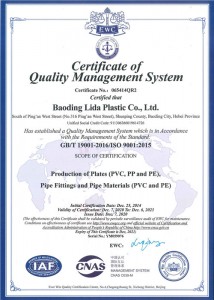Nov . 12, 2024 14:38 Back to list
hdpe pipe fittings
Understanding HDPE Pipe Fittings A Comprehensive Overview
High-Density Polyethylene (HDPE) pipe fittings are essential components in various piping systems, offering a robust solution for transporting fluids in numerous industrial and agricultural applications. Known for their strength, lightweight nature, and resistance to corrosion, HDPE fittings are increasingly used in modern infrastructure due to their cost-effectiveness and durability.
Properties of HDPE Pipe Fittings
HDPE is a thermoplastic polymer made from petroleum. It has remarkable qualities that make it suitable for various applications. Firstly, HDPE fittings are highly resistant to impact and do not easily degrade under environmental stressors. This characteristic makes them ideal for installations in challenging conditions. Additionally, HDPE is resistant to chemical corrosion, meaning it can transport a wide range of substances, including acids, bases, and solvents, without the risk of leakage or damage.
Another critical feature of HDPE fittings is their flexibility. They can be easily bent and shaped, allowing for creative and efficient installation solutions. This flexibility is particularly beneficial in applications that require tight turns or various angles in the piping network. Moreover, HDPE fittings can be joined using several methods, such as butt fusion, electrofusion, or socket fusion, enhancing their versatility in connecting pipes of different diameters.
Applications of HDPE Pipe Fittings
The applications of HDPE pipe fittings are vast and varied. They are commonly used in water distribution systems, sewage systems, gas distribution, agricultural irrigation, and even in mining operations. In the water sector, HDPE fittings help create leak-proof connections that are essential for maintaining water quality and reducing wastage.
hdpe pipe fittings

In agriculture, HDPE pipe fittings are crucial for drip irrigation systems, which help conserve water while maximizing crop yields. By providing efficient delivery of water directly to the root zone, these systems minimize evaporation and run-off, making irrigation more sustainable.
Advantages of Using HDPE Pipe Fittings
One of the most significant advantages of using HDPE pipe fittings is their longevity. Typically, HDPE systems can last for over 50 years with minimal maintenance, providing a reliable and long-term solution. This translates to reduced replacement costs and a lower environmental impact since fewer materials need to be discarded over time.
Furthermore, HDPE fittings contribute to energy savings. The smooth interior of HDPE pipes allows for the efficient flow of fluids, which requires less energy for pumping. This feature is particularly beneficial in large-scale applications where energy costs can be significant.
Conclusion
HDPE pipe fittings have become a popular choice in various industries due to their unparalleled durability, flexibility, and resistance to chemicals and corrosion. Their ability to adapt to different environments while providing efficient fluid transport solutions makes them indispensable in modern infrastructure projects. As industries continue to seek sustainable and cost-effective options, the demand for HDPE pipe fittings will likely continue to grow, solidifying their role as a staple in piping systems worldwide. Whether for agricultural or industrial use, HDPE pipe fittings stand out as a reliable choice for long-term applications.
-
Durable PP Rigid Sheet: Lightweight, Chemical Resistant Solutions
NewsAug.21,2025
-
PVC Grey Sheet for Extraction: Chemical Resistant & Durable
NewsAug.19,2025
-
Durable PVC Pipe Fittings for Plumbing & Irrigation Needs
NewsAug.18,2025
-
HDPE Steel Belt Reinforced Spiral Corrugated Pipe | High Strength
NewsAug.17,2025
-
HDPE Pipe Fittings: Durable, Leak-Proof Solutions
NewsAug.16,2025
-
Premium CPVC Sheet: High-Temp & Chemical Resistant Solutions
NewsAug.15,2025

